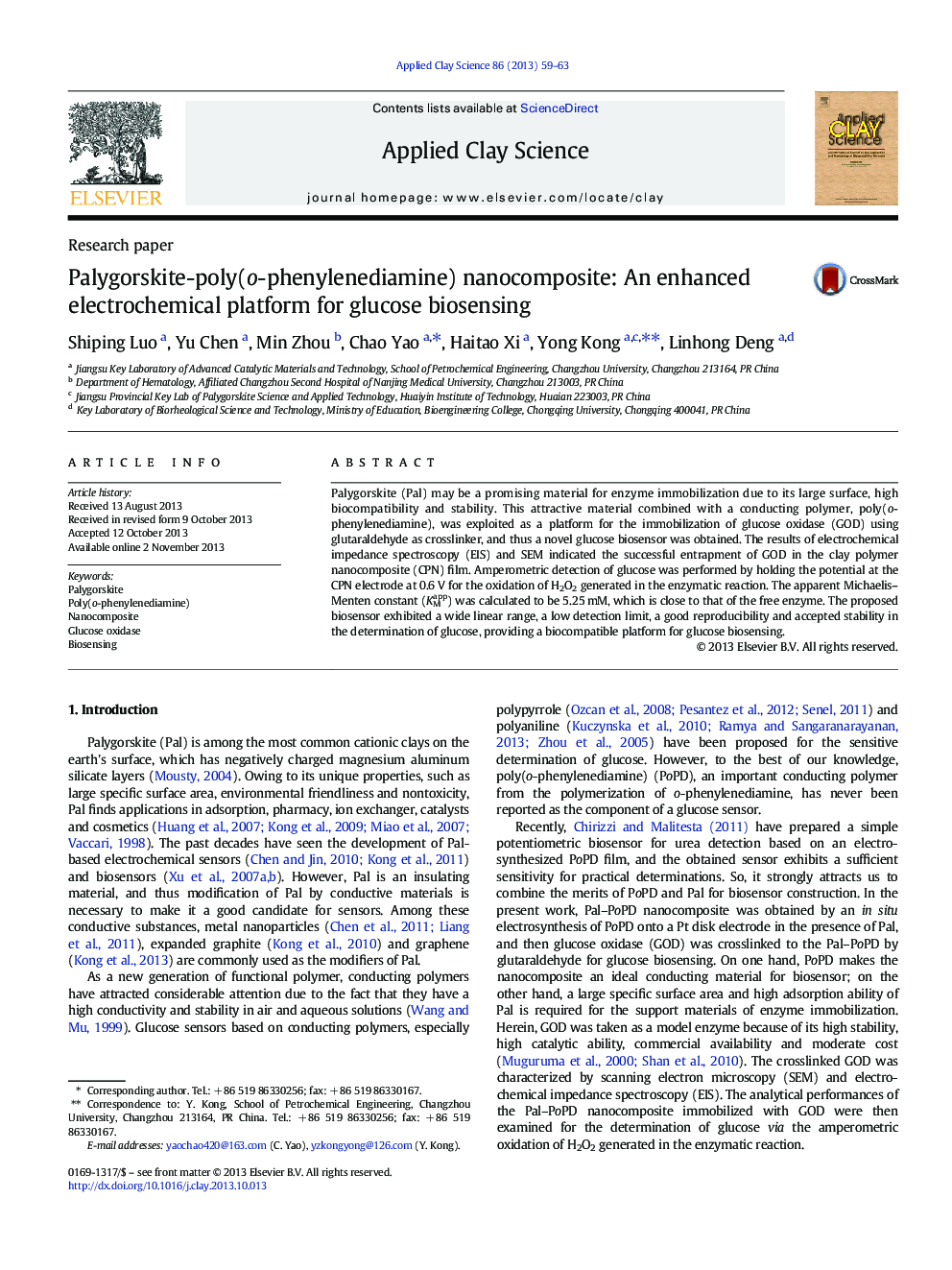| Article ID | Journal | Published Year | Pages | File Type |
|---|---|---|---|---|
| 8047227 | Applied Clay Science | 2013 | 5 Pages |
Abstract
Palygorskite (Pal) may be a promising material for enzyme immobilization due to its large surface, high biocompatibility and stability. This attractive material combined with a conducting polymer, poly(o-phenylenediamine), was exploited as a platform for the immobilization of glucose oxidase (GOD) using glutaraldehyde as crosslinker, and thus a novel glucose biosensor was obtained. The results of electrochemical impedance spectroscopy (EIS) and SEM indicated the successful entrapment of GOD in the clay polymer nanocomposite (CPN) film. Amperometric detection of glucose was performed by holding the potential at the CPN electrode at 0.6Â V for the oxidation of H2O2 generated in the enzymatic reaction. The apparent Michaelis-Menten constant (KMapp) was calculated to be 5.25Â mM, which is close to that of the free enzyme. The proposed biosensor exhibited a wide linear range, a low detection limit, a good reproducibility and accepted stability in the determination of glucose, providing a biocompatible platform for glucose biosensing.
Related Topics
Physical Sciences and Engineering
Earth and Planetary Sciences
Geochemistry and Petrology
Authors
Shiping Luo, Yu Chen, Min Zhou, Chao Yao, Haitao Xi, Yong Kong, Linhong Deng,
